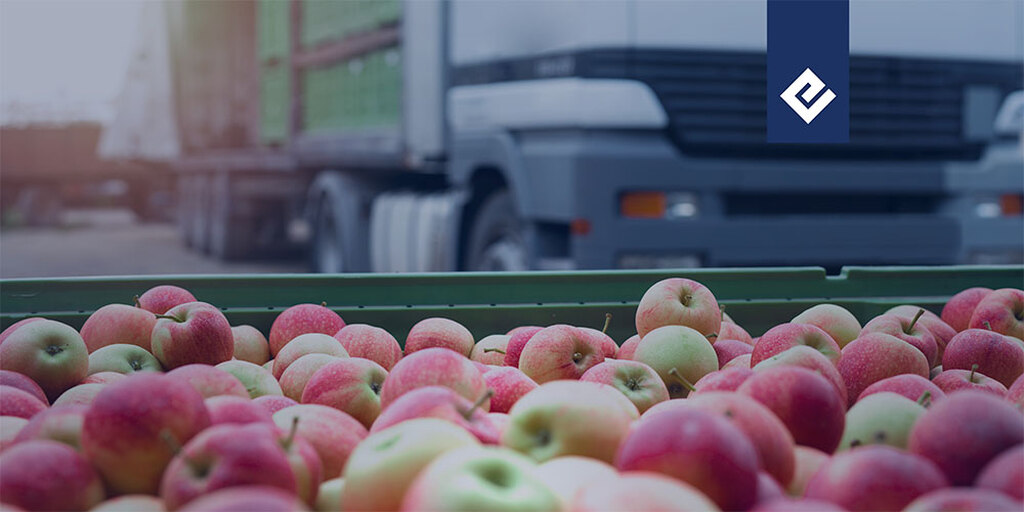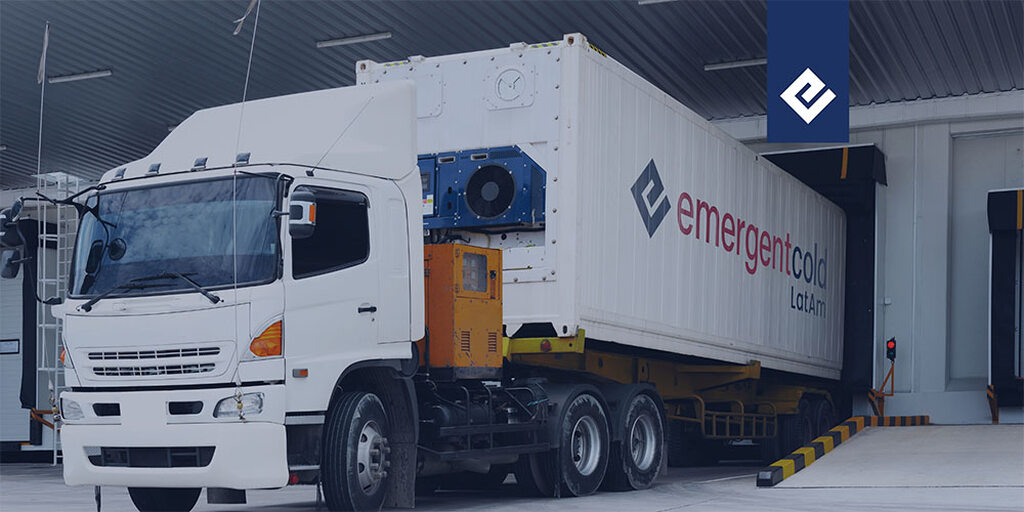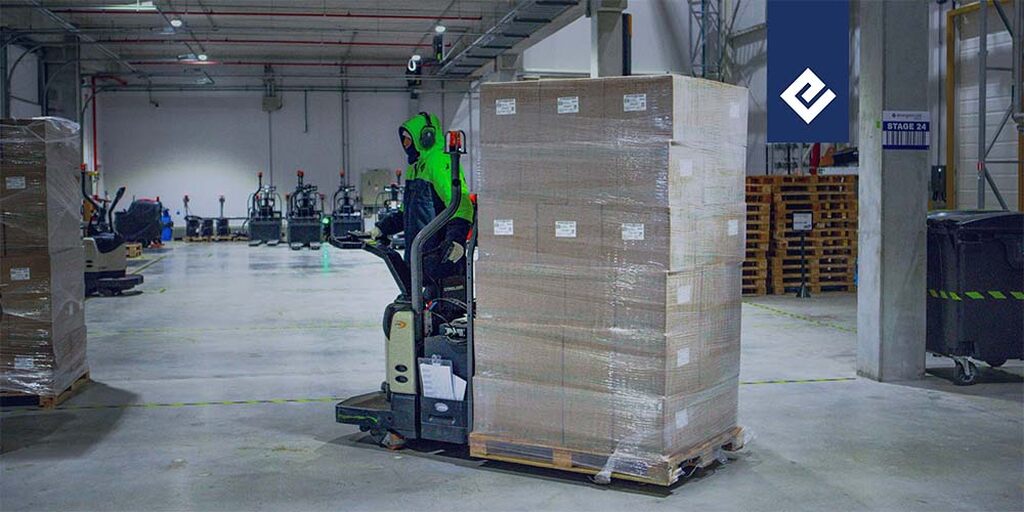A refrigerated warehouse is a fundamental facility in the cold chain, designed to store and conserve perishable products in a temperature-controlled environment. Its function goes beyond just storage: it guarantees that foods and other sensitive items maintain their quality, safety and freshness through to the final destination.
By avoiding temperature variations and reducing losses, this type of structure becomes strategic for companies in refrigerated and frozen logistics, both domestically and in international trade.
The refrigerated warehouse in the foods sector
In the foods sector, the refrigerated warehouse is an indispensable link between production and consumption. This type of space allows the receiving, storage and the dispatch of products in different temperature ranges — from refrigerated (between 0 °C and 5°C) to frozen (below –18 °C).

The importance of the refrigerated warehouse in the cold chain
Refrigerated warehouses prolong the useful life of the products and guarantee ideal conditions of quality and food safety through to the final destination.
This is especially important for the perishable foods sector (such as chicken, fish, beef, fruits, vegetables etc.), where the integrity of the product is decisive.
Principal operations of a warehouse
The operations within a warehouse (with temperature control) follow an integrated logic, which guarantees the safety, the quality and the trackability of the perishable products.
From the time when the goods arrive through until their dispatch, each stage requires rigorous temperature control and standardized procedures. Below we highlight the three principal pillars of these operations.
Receiving the goods
The receiving is the starting point of the operations in a refrigerated warehouse. At this stage, the perishable foods undergo a careful triage, which includes checking the documents, visual inspection, the verification of temperature on arrival and checking the integrity of the packaging.
Then the items are classified according to their thermal characteristics and are sent quickly to the correct storage areas: refrigerated or frozen. This process must be agile and precise to avoid thermal oscillations and to guarantee that the products keep their quality from the beginning of the cold chain through to the end consumer.
Storage and temperature control
During storage, the principal objective is to maintain the products under ideal conditions of conservation, depending on their specific needs.
To this end, the refrigerated warehouse has rooms equipped with automated refrigeration systems, reinforced thermal insulation, and digital temperature and humidity sensors.
These devices enable the continuous control of the environment, with monitoring in real time and alarms notifying of any deviation. Furthermore, the internal layout is designed to facilitate the routing of stock on the basis of the validity of the products.
The precise management contributes to the integrity of the foods and attending to the demands of the market.
Distribution
The distribution stage involves the separation and preparation of the orders for dispatch, observing the temperature requirements and logistics time periods of the clients. The products are organized in accordance with the FIFO method, which prioritizes dispatch of the items with the nearest expiry date.
The efficiency of this operation depends on well synchronized logistics, from the planning of routes through to the loading onto temperature-controlled vehicles.
The objective is to guarantee that the perishable foods leave the warehouse in perfect condition and arrive at their final destination within the quality standards expected, contributing to the reduction of losses and increased customer satisfaction.

Monitoring technologies for refrigerated warehouses
The adoption of advanced technologies is one of the pillars in guaranteeing efficiency and the operational safety of a refrigerated warehouse.
Solutions such as IoT sensors (Internet of Things) are fully employed to monitor critical variables in real time such as temperature, humidity and the opening of doors, reducing the risk of human error and improving trackability.
These sensors are integrated with remote monitoring systems that issue automatic alerts whenever there is a variation outside of the ideal parameters. This enables a fast response by the operational teams, minimizing losses and guaranteeing the integrity of the perishable products.
Furthermore, technologies such as Automated Storage and Retrieval Systems (AS/RS) enhance the precision in handling the goods, optimizing the use of the space and reducing the time of moving within the warehouse.
Warehouse management software (WMS) also contributes to the complete visibility of the cold chain, enabling detailed control by batch, validity and place of storage.
With these solutions, the refrigerated warehouses operate with greater predictability, energy efficiency and reliability — essential factors to meeting the requirements of the domestic and international markets.
Find out about our cold chain solutions
At Emergent Cold LatAm, we offer:
- refrigerated warehouses strategically located at ports and large urban centers;
- latest generation infrastructure with precise temperature control;
- trained experienced professionals;
- automated sustainable operations, focused on energy efficiency.
Take the opportunity to also check out one of our success cases: scarcity of containers — the importance of a reliable supplier to maintain the cold chain.

Conclusion
To sum up, the refrigerated warehouse is more than just a place of storage: it is a strategic point in guaranteeing that perishable foods arrive with quality, safety and freshness.
By investing in sophisticated operations, advanced technology and sustainability, Emergent Cold LatAm is positioned as an ideal partner for companies seeking excellence in the current cold chain.









